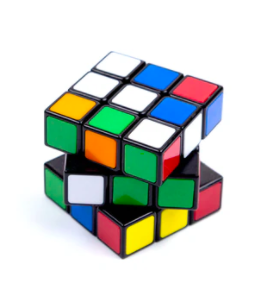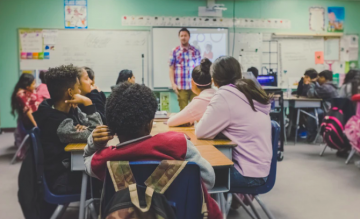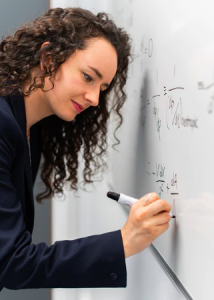“Mathematics is the language with which God has written the universe.”
Galileo Galilei
The last three episodes (episodes 7, 8, and 9) of our Thinking Outside the Sandbox podcast, are dedicated to discussing possible creative ways of teaching Math outside abstraction, in ways that embody more physicality and representation. Dr. Kerry Renwick, Dr. Susan Gerofsky, and Dr. Lorrie Miller shared beautiful diverse ideas and examples that highlighted teaching mathematics experientially through the five senses. For example, teaching the concept of patterns was demonstrated through music, observing nature, cultural activities, weaving, and storytelling.
Decolonizing space in Mathematics, integrating Indigenous Knowledge, redesigning the math classroom, teaching math for social justice were also discussed.
Begin by hearing from Dr. Susan Gerofsky, Janice Novakowsky and Dr. Cynthia Nichol in Thinking Outside the Sandbox: Math Part 1
Below are resources that might be used to support teaching Mathematics in an interdisciplinary way, that involves real-life contexts. “The Importance of Context” video by Heinemann explores how stories, posters, and real-life situations could set the stage for students to learn math through real-life contexts and problems.

Interactive Lessons
Interactive Lessons could be found in K-8 Mathematics station at PBS Learning Media, which includes a wide range of resources (videos, lesson plans, interactive lessons) that integrate real-world and Mathematical Problems.
Mathematics outside the Classroom
- Mathematical concepts could be explored easily in nature. Concepts as symmetry, spheres, measurements, meteorology, and geometry are all around us. Check this article for activities on these concepts.
- Age-specific outdoor activities for various concepts are available here.
- For more ideas on Math outside the classroom, check our blogpost.
On creating an inclusive, anti-oppressive Math classroom
As opposed to traditional mathematics classrooms that provide one-sided arguments, erase learners’ differences from their processes, and claim right versus wrong ways of problem-solving, Dr. Michael Marker in his blogpost suggests teachers would be aware of any oppressive practices in their classrooms.

He suggests creating a non-oppressive, third space which draws from Indigenous wisdom through:
- Includes collaboration with peer MKOs
- peer instruction: where students share responses to MCQ’s, and discuss these responses
- formative collaborative review: where students help other students with difficulties
- collaborative assessments: where students do their tests individually and mark their own work, then in groups of four complete the same test collaboratively.
2. Honors multiple ways of knowing; where all forms of solutions are celebrated
Integrating Indigenous Knowledge
- BC’s redesigned curriculum integrates Indigenous knowledge and perspectives throughout all areas of learning, one of which is math.
Check this document for implicit and explicit references to Indigenous Knowledge and Perspectives throughout Mathematics for K -12.
- The First Nations Education Steering Committee (FNESC) has recently updated teacher resource guide titled “Math First Peoples” which support grades 8 and 9 teachers to extend their teaching practices to be more reflective of First Peoples realities
- The Indigenous Knowledge & Mathematics Community of Practice has produced a series of videos that introduce mathematics through Indigenous Knowledge. The series includes exploring mathematics through the construction of knowledge, drumming, and the land.
- A collection of math lessons from OISE Centre for Urban Studies that teach Math through aboriginal storytelling, oral legends, weaving, and games. Also included are lessons that embed social justice issues regarding First Nations.
- An interesting way of weaving Metis weaving, Cost Salish artwork, Ojibwe poetry reading and talking sticks ceremonies into Mathematics course in an attempt to integrate Indigenous knowledge and pedagogy to enhance student learning and well being has been demonstrated by Petra Menz, a senior lecturer in the Department of Mathematics, at SFU. Check out this article for more details.
Teaching Mathematics for Social Justice
 Social Justice Issues could be easily taught through Math.
Social Justice Issues could be easily taught through Math.
- Radical Math provides a guide on integrating issues of economic and social justice into the Mathematics curriculum. Check out this social justice topics chart created by Jonathen Osler, founder of Radical Math. The chart includes math topics and relevant social justice issues. Examples include linking graphs to incarcerations rates for different populations, or probability with racial profiling (exploring the probability that a traffic stop should be of a person of color.
Mathematics Apps
- Explore room design apps to learn mathematics principles such as geometry and arithmetic through interior design projects.
- Photomath is a math teaching app that provides solutions to math problems elaborating the steps to these solutions
- PHET is an online repository of interactive simulations and lessons fro Science and Math classroom.
- More ideas for Tech integration in your Math classroom could be found here.
Games
- A variety of games that could help students better comprehend mathematics, on various concepts, from numbers and counting to decimals, fractions, graphs, money, and time, are included in this list.
- Cool Math Games includes many online fun games that involve mathematical concepts that could be found here.
Guest Post: Nashwa Khedr, EDCP graduate student, project assistant 2020

